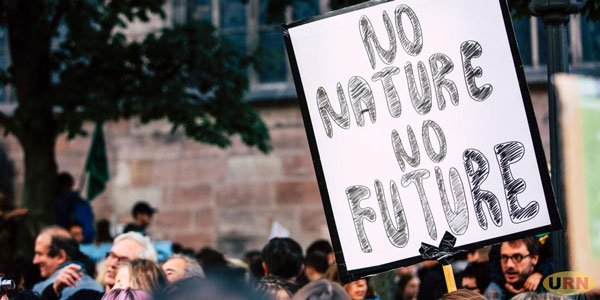
Kampala, Uganda | THE INDEPENDENT | Today Friday, 3 May is World Press Freedom Day, which this year is dedicated to the importance of journalism amid a series of mounting environmental crises.
Environmental journalists are often the chroniclers of the triple planetary crisis of climate change, nature and biodiversity loss, and pollution and waste.
Many reports on hidden issues such as illegal logging and the theft of freshwater. In recent years, a growing number of environmental journalists have faced harassment, assault, and even murder.
Research suggests that more than dozens of environmental journalists were killed in the past two decades, making it the most dangerous journalism field after war reporting.
Andrew Raine, Deputy Director of the United Nations Environment Programme (UNEP) Law Division says environmental journalists are on the frontlines of the triple planetary crisis .
“And it has never been more important to access reliable, fact-checked information.” It is not just traditional reporters who face reprisals. Also facing threats are citizen journalists, many of whom are Indigenous Peoples trying to protect their land from predatory corporations and local authorities.
According to the environmental group Global Witness, 1,910 land and environmental defenders were killed between 2012 and 2022.Indigenous and environmental groups are increasingly turning to courts to ensure their voices are heard and companies and countries live up to their environmental obligations.
But courts are also being used to silence environmental journalists and environmental defenders, particularly through what are known as strategic lawsuits against public participation, or SLAPPs.
According to the international human rights organization Front Line Defenders, the criminalization of human rights defenders – which often involves arrests – was the most prominent form of attack in 2022, accounting for more than one-third of the year’s recorded violations.
With the world moving away from fossil fuels and towards renewable energy, which requires certain minerals, the risks to environmental journalists may increase.
So, how can environmental reporters and defenders be protected?
“Countries need to ensure adequate legal frameworks, taking inspiration from the Escazú Agreement,” Raine says. “But these need to be robustly implemented and enforced.”
Since 2018, UNEP has published a guidebook for best practices on environmental rights. Its recommendations include educating companies on their environmental responsibilities and helping develop legal structures that protect environmental rights. In 2023, the United Nations also published a guidance note highlighting how environmental human rights defenders can be better protected.
“Ultimately, the rule of law needs to be enforced,” Raine says, conceding that can be difficult in more remote areas. “Environmental journalists are a vital part of combatting the triple planetary crisis and their protection benefits us all.”
“As we see the climate crisis worsening and more pressure being put on land and resources, we may see an even harsher clampdown on environmental journalists,” says Raine.
UNEP has been working on issues related to human rights and the environment for almost two decades. The organization is identifying best practices and raising awareness among judicial bodies on constitutional environmental rights.
UNEP is also supporting the negotiations towards the Escazú Agreement, which guarantees people’s right to obtain environmental information and to participate in decision-making that affects their lives and environment.
****
URN
 The Independent Uganda: You get the Truth we Pay the Price
The Independent Uganda: You get the Truth we Pay the Price



